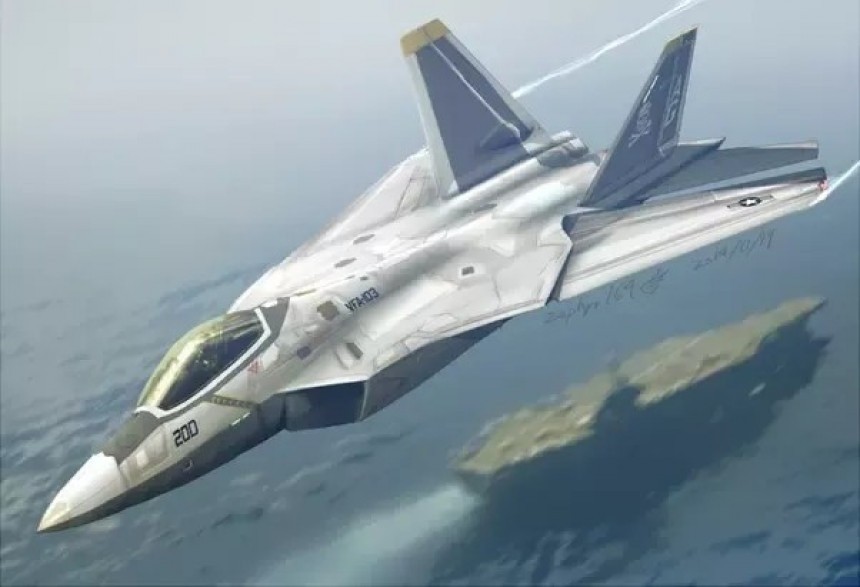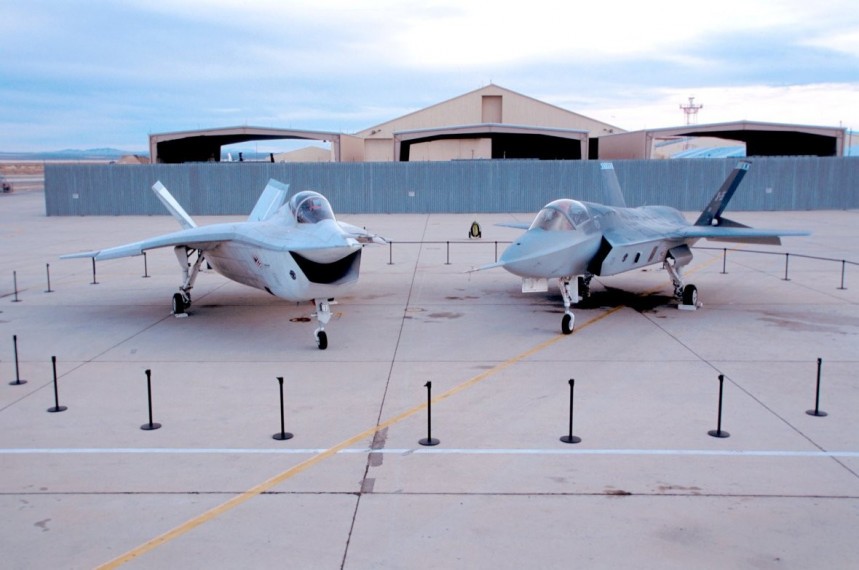Northrop-Grumman is among the elite military contractors who routinely receive more government funding than some civilian tech companies will ever see from founding until solvency.
People often forget that the two companies were once separate entities. But this notion had us thinking of an idea. That idea is to envision what a modern battlefield would look like had the two American aerospace giants remained separate into the 21st century. We have reason to suspect pretty different from how it is today.
Firstly though, a little bit of background from our own timeline. Northrop and Grumman were two companies on opposite ends of the country that seldom interacted with one another historically. Northrop was founded eponymously by one Mr. John (Jack) Northrop in the Los Angeles County city of Hawthorne, California.
The company struggled in the beginning but found its stride in the magnificent P-61 Black Widow radar-equipped night fighter. It would go on to pioneer the flying wing prototype YB-39 and 45 bombers that would culminate in the later Northrop-Grumman B-2 Spirit. They're notable for designing the F-5 light jet-fighter and all of its variants, including the T-38 trainer.
Meanwhile, Grumman was also self-named by one Leroy Grumman in the then working-class Long Island, New York area directly east of New York City. The company moved HQ from the Nassau Country neighborhoods of Baldwin to Farmingdale, Garden City, and finally, Bethpage. Their biggest claim to fame was their "Cat" line of Navy fighters starting in World War Two. With the F4F Wildcat, F6F Hellcat, F8F Bearcat, F9F Panther, and the iconic F-14 Tomcat jet fighter.
Grumman planes were known for being the toughest, most dependable Navy aircraft anywhere in the world. Famous for taking brutal flak and machine gun hits and making it back home in one piece. Nowhere near as sophisticated in design as the radical flying wings and radar night fighters of Northrop, but every bit as effective in the air.
By the late 1990s, both companies were in hard times. Grumman struggled to maintain military contracts following the end of the Cold War. At the same time, Northrop's F-5 and F-20 Tigershark concepts failed to find international buyers. The end result was a merger that wiped nearly every Grumman job on Long Island off the face of the earth. Northrop-Grumman's HQ is now located in West Falls Church, Virginia.
But if this merger hadn't happened, and the two companies remained separate entities, would it have made a difference in the long run? Our opinion is, absolutely, it would have been different. Firstly, the F-14 program was retired in September 2006 in our timeline. Grumman had indeed been designing a Tomcat variant that was superior to the F-14D model retired in the mid-2000s. The initiative was dubbed Project 21, or Super Tomcat 21, informally.
If, say, the Grumman design for the American Space Shuttle been selected instead of Rockwell International's, and there the late 90s slump never taken place, it's very possible the Super Tomcat 21 finds its way onto modern American supercarriers to supplement the F/A-18 Super Hornet.
Furthermore, it wouldn't be a stretch to say a Super Tomcat may have been a threat to the Lockheed Martin F-35 Lightning II project. One of the Joint Strike Fighter's initiatives in service with the Navy was to help fill the gap left by the F-14D's retirement, after all. Among its several other jobs for NATO forces.
Could it be that the more Air Force-focused but still Navy-capable Boeing X-32 was selected over the Lockheed Martin X-35 in this timeline? Or maybe neither of them exists at all. It would be hard to fit all those different planes onto one aircraft carrier, one would think. Furthermore, Northrop was beginning work on the YF-23 Black Widow II stealth fighter just before the merger with Grumman. Lockheed Martin has been accused by aviation geeks online in the past of foul play in the selection of its YF-22 Raptor over the Black Widow II in their competition for contracts.
It's not an entirely baseless online armchair-historian conspiracy. The Lockheed Corporation had been caught bribing politicians and military personnel for contract privileges for their F-104 Starfighter and other aircraft in the 60s and 70s. Be it foul or no foul, had military aviation history gone slightly differently in the mid-90s? Could it be squadrons of F-23 Black Widow IIs in the skies over modern battlefields over the Raptor? Or maybe a plane entirely different altogether than the ones in our timeline. One can only wonder. And so, this hypothetical will remain in that space for us to enjoy.
But what do you think would have happened had Northrop Grumman never joined forces? Let us know in the comments down below.
Firstly though, a little bit of background from our own timeline. Northrop and Grumman were two companies on opposite ends of the country that seldom interacted with one another historically. Northrop was founded eponymously by one Mr. John (Jack) Northrop in the Los Angeles County city of Hawthorne, California.
The company struggled in the beginning but found its stride in the magnificent P-61 Black Widow radar-equipped night fighter. It would go on to pioneer the flying wing prototype YB-39 and 45 bombers that would culminate in the later Northrop-Grumman B-2 Spirit. They're notable for designing the F-5 light jet-fighter and all of its variants, including the T-38 trainer.
Meanwhile, Grumman was also self-named by one Leroy Grumman in the then working-class Long Island, New York area directly east of New York City. The company moved HQ from the Nassau Country neighborhoods of Baldwin to Farmingdale, Garden City, and finally, Bethpage. Their biggest claim to fame was their "Cat" line of Navy fighters starting in World War Two. With the F4F Wildcat, F6F Hellcat, F8F Bearcat, F9F Panther, and the iconic F-14 Tomcat jet fighter.
By the late 1990s, both companies were in hard times. Grumman struggled to maintain military contracts following the end of the Cold War. At the same time, Northrop's F-5 and F-20 Tigershark concepts failed to find international buyers. The end result was a merger that wiped nearly every Grumman job on Long Island off the face of the earth. Northrop-Grumman's HQ is now located in West Falls Church, Virginia.
But if this merger hadn't happened, and the two companies remained separate entities, would it have made a difference in the long run? Our opinion is, absolutely, it would have been different. Firstly, the F-14 program was retired in September 2006 in our timeline. Grumman had indeed been designing a Tomcat variant that was superior to the F-14D model retired in the mid-2000s. The initiative was dubbed Project 21, or Super Tomcat 21, informally.
If, say, the Grumman design for the American Space Shuttle been selected instead of Rockwell International's, and there the late 90s slump never taken place, it's very possible the Super Tomcat 21 finds its way onto modern American supercarriers to supplement the F/A-18 Super Hornet.
Could it be that the more Air Force-focused but still Navy-capable Boeing X-32 was selected over the Lockheed Martin X-35 in this timeline? Or maybe neither of them exists at all. It would be hard to fit all those different planes onto one aircraft carrier, one would think. Furthermore, Northrop was beginning work on the YF-23 Black Widow II stealth fighter just before the merger with Grumman. Lockheed Martin has been accused by aviation geeks online in the past of foul play in the selection of its YF-22 Raptor over the Black Widow II in their competition for contracts.
It's not an entirely baseless online armchair-historian conspiracy. The Lockheed Corporation had been caught bribing politicians and military personnel for contract privileges for their F-104 Starfighter and other aircraft in the 60s and 70s. Be it foul or no foul, had military aviation history gone slightly differently in the mid-90s? Could it be squadrons of F-23 Black Widow IIs in the skies over modern battlefields over the Raptor? Or maybe a plane entirely different altogether than the ones in our timeline. One can only wonder. And so, this hypothetical will remain in that space for us to enjoy.
But what do you think would have happened had Northrop Grumman never joined forces? Let us know in the comments down below.







